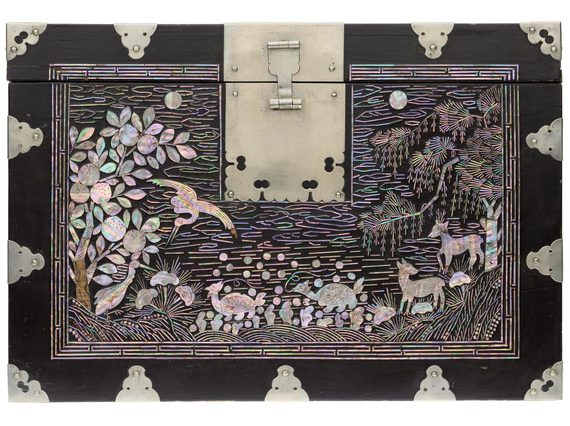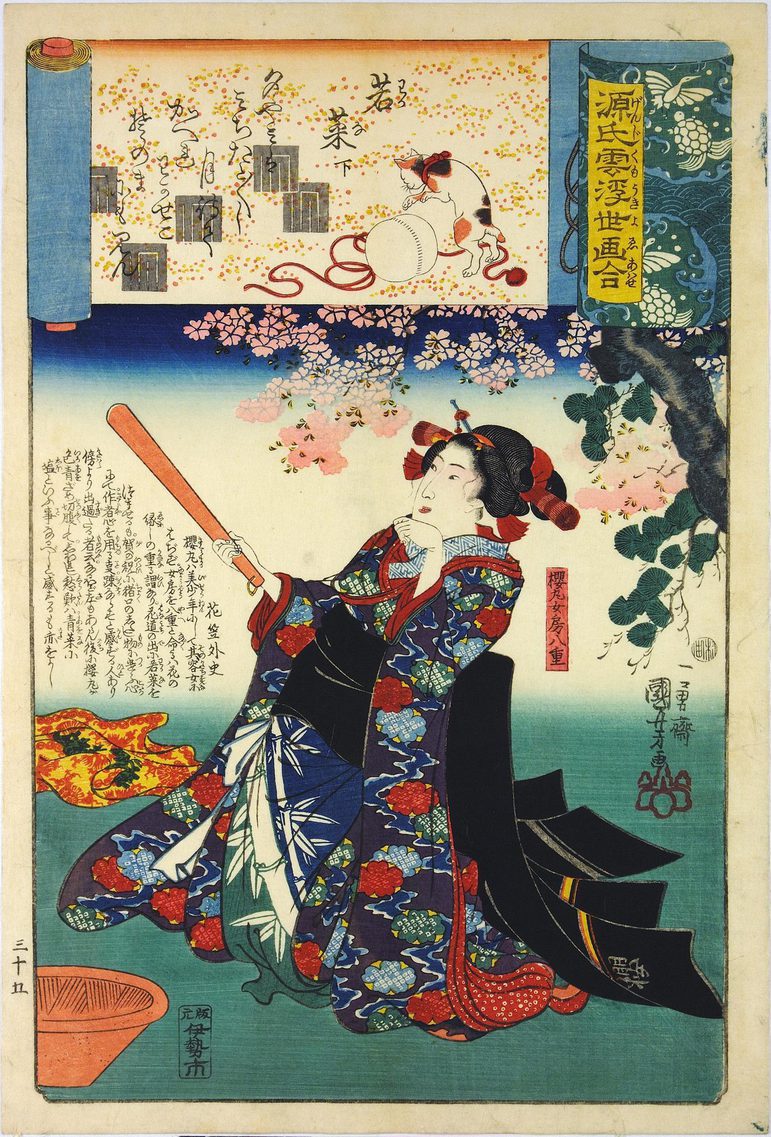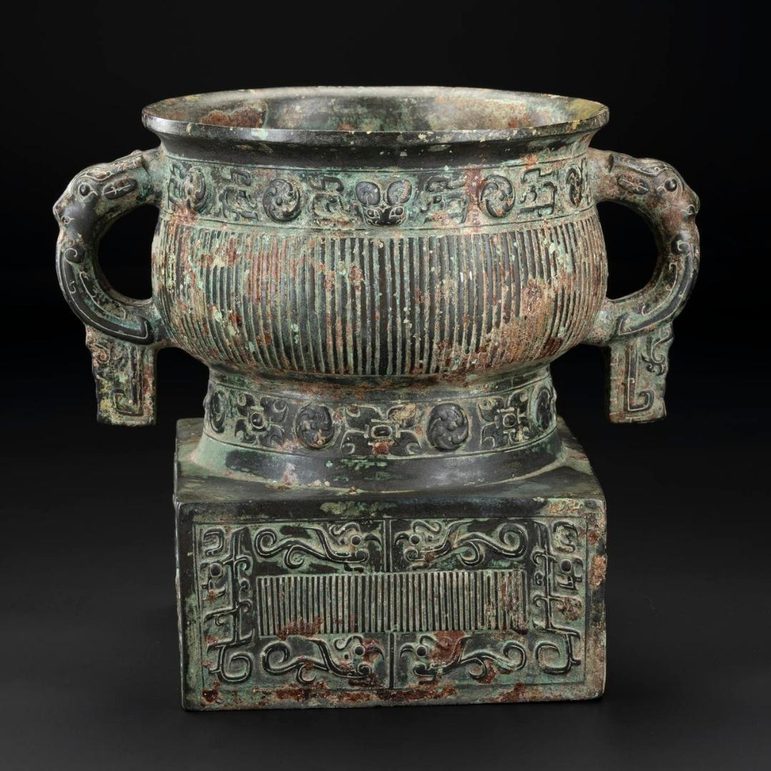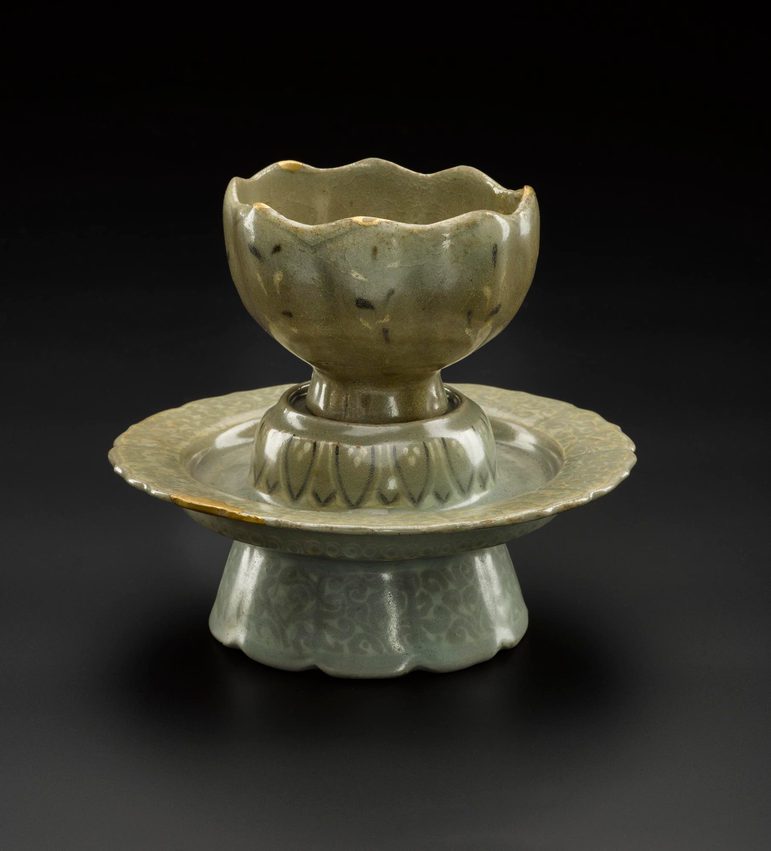
East and Central Asia
The Museum’s East and Central Asian collections, comprised of over 36,000 objects, are of national and international importance. The collection includes ceramics, lacquer, prints and paintings, clothing and textiles, ivory, metalwork, jade, furniture, contemporary art, and coins.
Japanese and Ainu collection
National Museums Scotland holds the largest Japanese collection in Scotland, and the largest in the UK outside London. The collection contains over 12,000 Japanese and 350 Ainu objects, ranging from ancient archaeology to contemporary crafts and from the ordinary to the ornate.
Notable areas of the Japanese collection include c.4,500 woodblock prints, mainly from a group purchase in 1887 of Edo period (1615-1868) art; c.2,000 archaeological artefacts, many of which were donated by Dr Neil Gordon Munro; c.1,600 ceramics, including donations of collections from David and Anne Hyatt King (via the Art Fund) in 2015, Irene Finch, and Anne and David Hale in 2022; and almost 1,000 netsuke (carved toggles).
Other materials cared for in the Japanese collection are arms & armour (including c.350 pieces of sword furniture), Buddhist objects, lacquerware, paintings, clothing and textiles, metalwork, and coins. Acquisitions in recent decades have focused on jewellery, 20th-century prints, and contemporary ceramics.
The Ainu collection is of international significance. It features historical and contemporary pieces, mainly clothing and accessories, carved wooden items – many of which relate to weaving or hunting – and ritual objects.
In the 1880s, Dr John and Grace Anderson and Isabella Bishop (nee Bird) donated a number of Ainu objects. However, the majority of the Ainu collection was donated by Dr Munro in the early 1910s. Contemporary Ainu works were added to the collection, through purchase and donation, in the 2000s, including pieces by the carver Kaizawa Tōru.
Japan is also represented across the collections of natural history, military history, and science and technology.

Chinese collection
National Museums Scotland holds the largest Chinese collection in Scotland, numbering around 11,000 objects. These include diverse representations of Chinese material culture such as funerary objects, religious figurines, items of daily life, scholarly implements, and decorative and contemporary art, produced for both internal Chinese and international markets. Collecting China began in the museum as early as the 1850s through gifts and donations from Scottish people who travelled to China. One highlight of the collection is the c.1800 oracle bones of the late Shang dynasty (c.1250-1050 BCE) from Samuel Couling (1859–1922) and Frank Chalfant (1862–1914), the largest such collection in Europe.
The collection continues to grow and also focuses on more recent decades, such as material demonstrating the visual culture of Mao era China (1950s-1970s). The Mao collection consists of c.500 items, representing various media and formats, and is now one of the most important such mixed-media collections in the UK. Other contemporary collecting has included c.11,000 photographic slides and prints of Chinese historical sculptures by Ann Paludan, and face masks produced for the Chinese national team at the Tokyo 2020 Olympics and Paralympics.

Korean collection
The Korean collection spans over 2,000 years and features decorative arts and crafts alongside objects used in everyday life, including clothing, furniture, and games. Ceramics make up the majority of the collection and represent the developments in technique and styles over several periods of Korean history.
The collection has been built in part through gifts to the museum. In 2002 the Korean Ministry of Culture, Sports and Tourism donated pieces illustrative of modern Korean shamanic practice, which remains an important aspect of contemporary Korean life and dates from the 1960s to the late 1990s.
More recent acquisitions of Korean material have focused on work of some of South Korea's leading ceramicists, and lacquer and glass artists. These include a white porcelain jar by Kim Yikyung (b. 1935), a stoneware jar by Cho Chung-hyun (b. 1940) entitled Summer Willow Greets Autumn, a bowl from Suku Park's (b. 1947) Winter Series, a glass vessel by Choi Keeryong (b.1976) and a lidded lacquer food box by Sohn Daehyun (b. 1949).

Himalayan collection
The Himalayan collection includes objects from Nepal, Bhutan and Tibet. The largest collection within these is the Tibetan collection which includes over 1000 objects. The Tibetan objects include jewellery, weaponry, clothing, household goods as well as objects relating to the practices of Tibetan Buddhism. There are over 100 objects from Bhutan including clothing, weaponry and jewellery, and more than 300 pieces from Nepal. The strengths of the Nepalese collection are weaponry and coins, but the collection also includes jewellery, everyday items and statues of Buddhist and Hindu deities.
